Sacramento Office of Arts and Culture
https://arts.cityofsacramento.org/Programs/Public-Art
The City of Sacramento’s nationally renowned Art in Public Places (APP) program was established in 1977 to expand public experiences of visual art by installing artworks in public spaces. It includes a collection of more than 650 artworks. More than 60% of these artworks are by local and regional artists.
The Office of Arts and Culture manages Sacramento’s Public Art Program, which is funded through City and County ordinances and a Memorandum of Understanding that specifies 2% of eligible City and County capital improvement project budgets be set aside for the commission, purchase, and installation of artworks throughout the City. With support from the Arts, Culture and Creative Economy Commission, the Art in Public Places staff oversees the development of a public art master plan, long range planning, policy and procedures and reviews and approves artist selection and projects.
In 2000 the Mayor of Sacramento at that time, Joe Serna, instigated a call for artists to create a Memorial Artwork for Cesar Chavez, to be placed in Chavez Park across the street from Sacramento City Hall. The project was administered through Sacramento’s Public Art Program, which selected the work below by artist Lisa Reinertson.
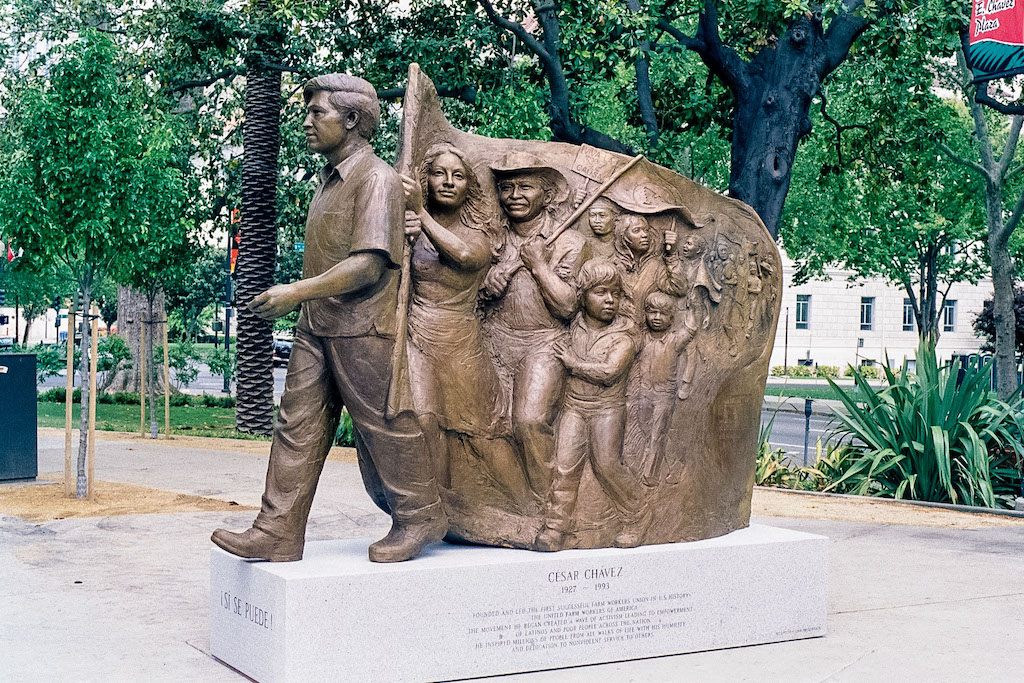
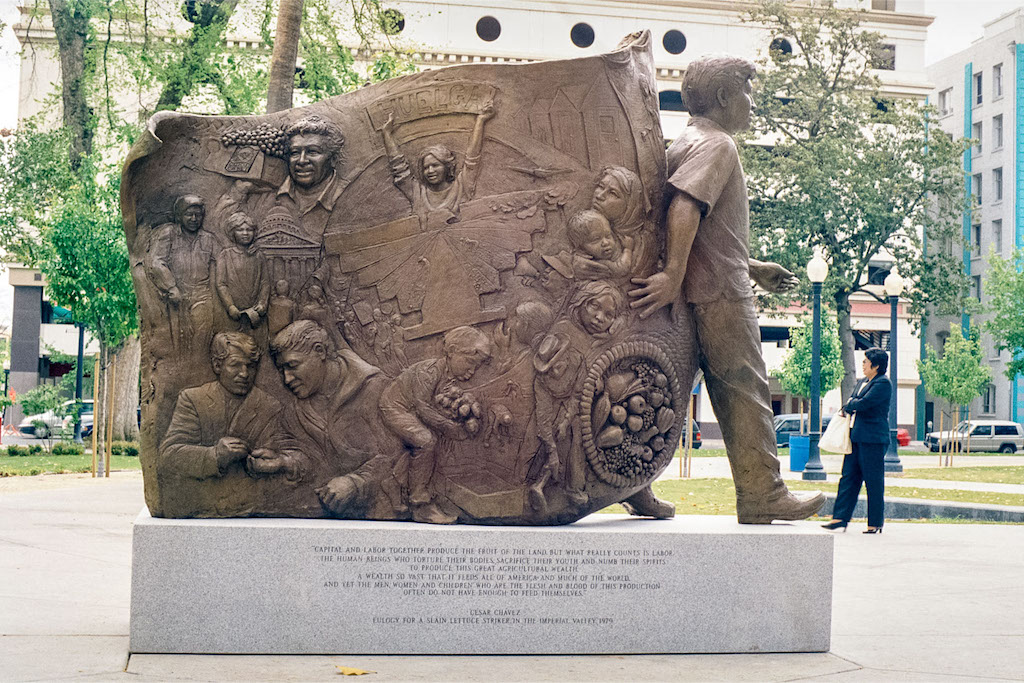
Lisa Reinertson
Cesar Chavez Memorial (2001)
Bronze, 8.5 ft x 7 ft x 3 ft
Chavez Park, 910 I St, Sacramento, CA
Photos courtesy of the artist
In March 1966 Cesar Chavez lead an historic march from Delano to the State Capitol in Sacramento, in order to call attention to needed legislation to ensure decent human rights for the United Farm Workers. Originally, about 250 farmworkers began the march, but by the time they arrived in Sacramento the number was over 2000 marchers. The artist and her family joined the march up Highway 99 for a few of the days, experiencing firsthand the incredible inspired and determined energy of people nonviolently marching for their rights.
The sculpture shows Cesar Chavez as the figure in front leading the March. On the left-hand side is a female marcher holding a huge flag that becomes the backdrop for an image of all the people in the march, depicted in varying depths of high to low relief. Nearly every person portrayed in this scene of marchers was actually in the 1966 march, or connected in some way with the Farmworkers Movement. On the right-hand side of the sculpture you see the United Farm Workers flag. The central image is an eagle designed by Cesar Chavez’s brother, Richard Chavez. The UFW flag is used as a backdrop for mural-like images that depict the issues, the struggles, the stories, and the wins and celebrated victories of the United Farm Workers Movement led by both Cesar Chavez and Dolores Huerta.
Dolores Huerta is depicted in the sculpture above the eagle holding a sign that says “Huelga”, meaning “Strike”, in Spanish. Some of the images included in the sculpture are of the migrant housing conditions, of child labor, and of workers in the fields being sprayed with pesticides by a crop duster flying overhead. There is a cornucopia overflowing with the vast amount of produce we all enjoy because of the hard and unfair labor conditions for migrant workers. There’s an image of Cesar Chavez breaking his “Fast for Peace” with Bobby Kennedy, and an image of Richard Chavez holding the first Union labeled box of grapes. The strikes and the boycotts are represented, and an intimate depiction of Cesar Chavez being helped by his daughter, as they walked along the March with his injured foot. The sculpture is set on a granite base that has quotations by Chavez etched into the surface. — Lisa Reinertson
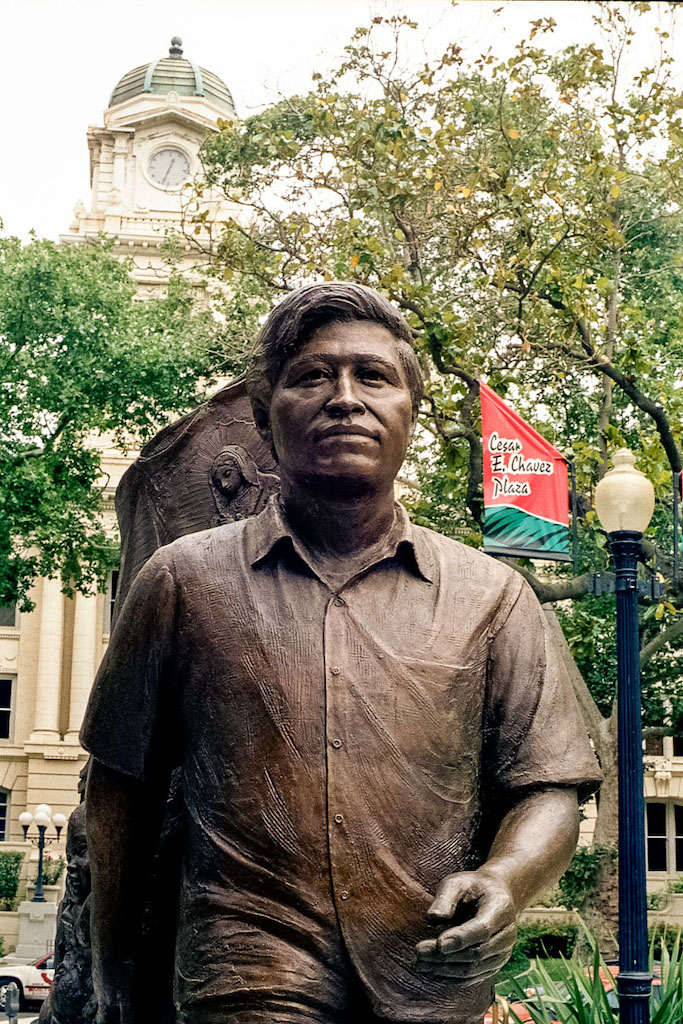
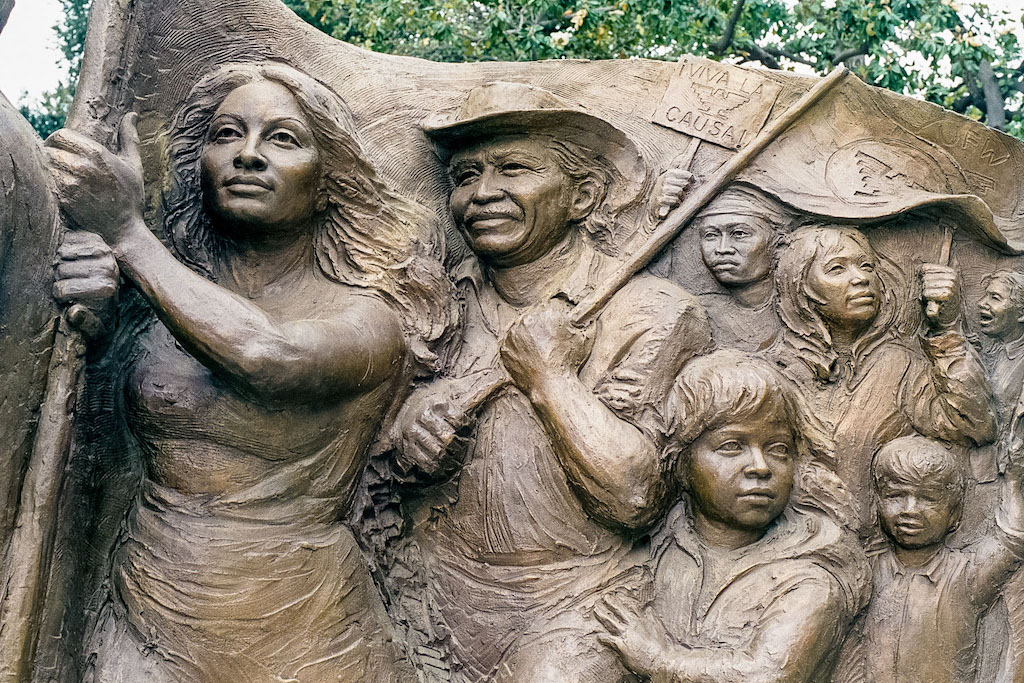
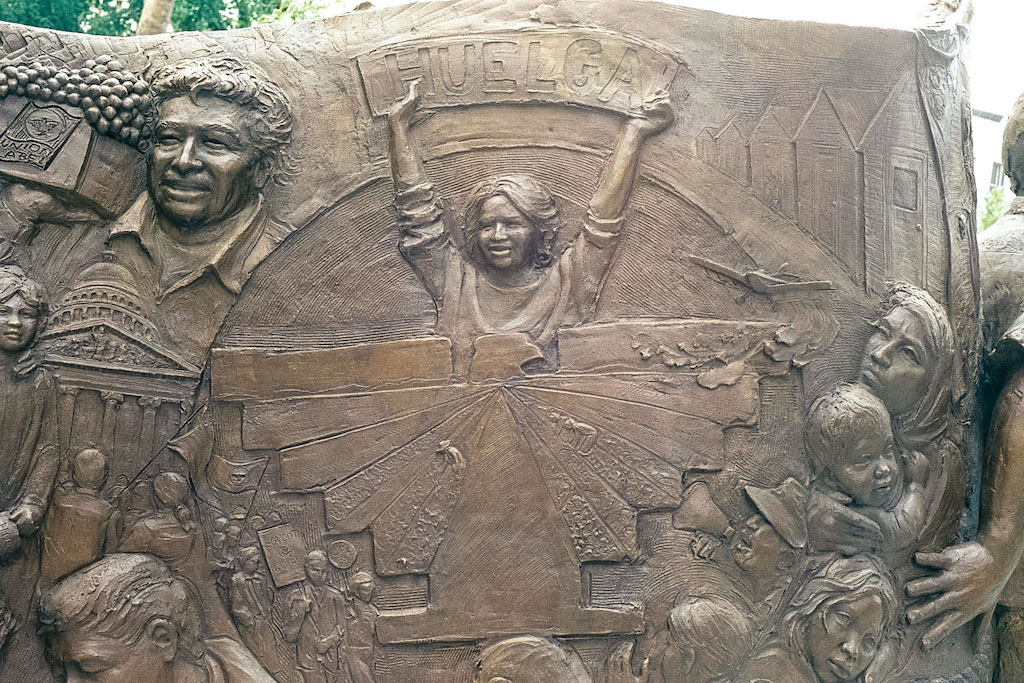
Also check out the National Park Service
César E. Chávez National Monument and Park
29700 Woodford-Tehachapi Road
Keene, CA






